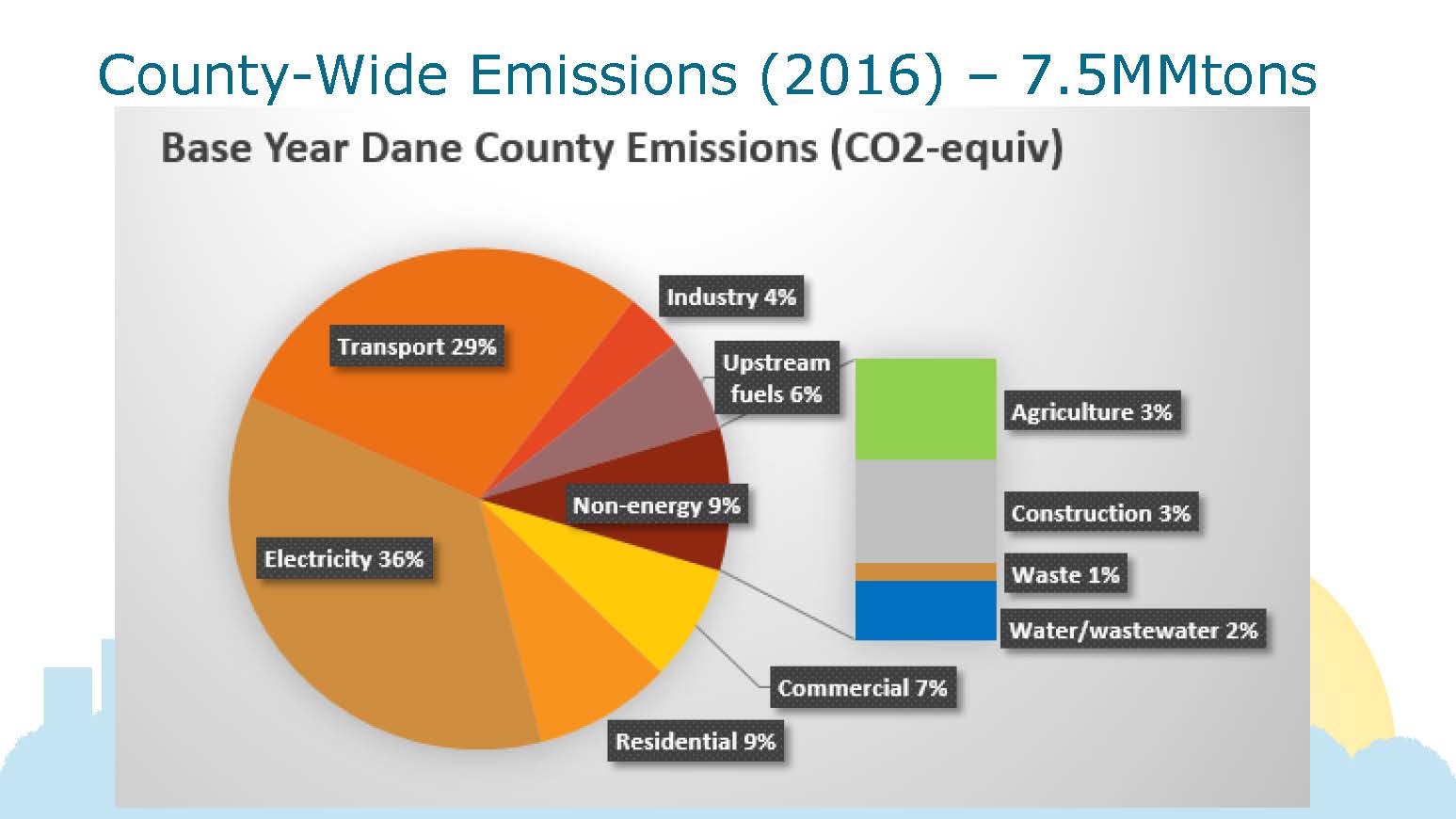For a Future that is Cleaner, Healthier and More Equitable
June 15, 2021 | Susan De Vos


According to Dane County's 2020 Climate Action Plan, 29 percent of the county's CO2 emissions in 2016 could be attributed to transportation (p.66). (National figures are similar.) The Plan also lists "equity and justice" as the first of six guiding principles (p.36). One might expect therefore, that a big part of the county's effort to reduce greenhouse gas emissions would be to pursue "transportation equity" or to ensure "accessible and affordable transportation for everyone." And as someone who prioritizes access to opportunity and oversaw the creation of the county office of energy and climate change, the reader might expect that the county executive would spearhead the effort toward achieving transportation equity. It is both surprising and disappointing therefore that nothing could be farther from the truth. One might expect the transportation part of the Climate Action Plan to have something broadly along the lines of the recent recommendations made by Transportation for America in its report on driving down emissions:
Those recommendations prioritize people, not profit. They prioritize walking, safety, shorter over longer distances and environmentally and socially sustainable transportation modes. They prioritize accessibility, affordability and a reduction in both vehicle miles traveled and greenhouse gas emissions. Unfortunately, that is not what the county's Climate Action Plan does. Rather, the Plan's first transportation recommendation is to electrify motor vehicles, especially cars (p. 94). Never mind that owning and operating any car should not be the first recommendation of a report claiming to make equity and justice its first guiding principle. Never mind that a sizable proportion of the county's population cannot, or does not want to, drive any car for one reason or another. Does this first recommendation for transportation and land use prioritize people or profit? The Plan's second transportation recommendation is to use renewable natural gas-fueled vehicles (p. 97) with gas the county generates from its $29 million biogas processing facility at its landfill. The county had already converted more than 80 of its heavy-duty vehicles such as snowplows and dump trucks to run on compressed gas rather than diesel and expected to do more. (There were 11,975 heavy-duty vehicles registered in Dane County as of 2020; p.99.) The county planned to turn its renewable gas-generating enterprise into a profit-making business. Again, is the idea behind this recommendation to prioritize people or profit? Only third and last on Dane County's Climate Action Plan's transportation-recommendation list is "reducing emissions through reduced driving." Begrudgingly it seems, the Plan says (p. 99): "Transitioning to electric vehicles that run on clean energy ... cannot fully achieve the necessary emissions reductions." Placement of the recommendation to reduce driving at the end seems particularly odd as one might expect it to be first, not last. The Plan's Executive Summary even ignores it when that summary first lists recommendations (#5 p.7) but then remembers its afterthought three pages later. What specific actions are recommended to reduce Vehicle Miles Traveled? In order they are 1) land conservation; 2) urban villages; 3) active transportation (including the use of electric bikes); 4) regional transit; 5) project scoring; 6) pricing and incentives; and 7) triple-benefit transportation systems. Each item could easily occupy an entire essay itself but the last one at the end of the whole section on transportation and land use deserves highlight (p.104): "If fewer vehicles on our roads (reducing VMT) is an important strategy ..., and expediting the transition to electric vehicles is an important strategy, and creating just and equitable access ... is an important strategy, then it only stands to reason that transportation systems that accomplish all three strategies should be a very high priority." This should start the whole discussion, not be the afterthought at the end. The key statement may be at the very end of the Plan's transportation section because county activity belies any real action to reduce Vehicle Miles Traveled or improve transportation equity. Even according to the county's own office of energy and climate change, the county's VMT increased 28% between 2016 and 2019, the latest time for which there were figures. Consider an issue currently in the news: a new expansion of the county airport to the tune of 90,000 sq. ft. and $85 million to be completed by the summer of 2023. It is common knowledge that traveling via a short domestic flight is expensive and involves the highest carbon footprint possible; that surface transportation modes such as inter-city rail or bus can be more accessible and much less polluting. Terminal expansion also comes on the heels of years of added structured and surface parking, encouraging increased car use and ever-more VMT, even as the county continues to refuse providing any shuttle service to the facility or providing any inter-city rail/bus facility. Is a combined concern with both a lack of transportation equity and encouraging more car use supposed to be mollified by the fact that Madison Gas and Electric is leasing land from the airport for a 9-MW solar array there? Another recent and disappointing transportation-related action by the county after its establishment of an office of energy and climate change was the addition of a $28 fee onto the state's vehicle registration fee (aka a "wheel tax") in 2018. Rather than using the revenue to foster transportation equity or reduce VMT, Parisi is reported to have said that the fee would enable the county " ... to spend about $12 million on transportation matters such as snow removal, road maintenance and road-expansion projects." And what was one of the first things Madison's current mayor did after being sworn into office in April 2019? Agree to help the county expand Cottage Grove Rd. into Madison from two to four lanes. How is that supposed to prioritize transportation equity or reduce VMT? Lip service is nothing more than lip service. Unless people believe it and it gets politicians elected. |